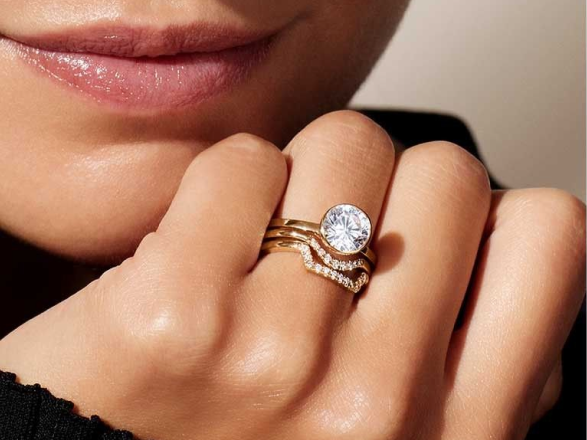What are Lab-grown diamonds?
As professionals in the jewelry sector,

How are Lab Grown Diamonds made?
Contrary to natural diamonds, created in the Earth's crust over centuries or even millennia under extreme pressure and heat conditions, the LGDs are created in labs using the CVD and HPHT techniques. A crystal with a distinctive shape can be created in less than a month.
A seed, or a piece of another diamond, is the foundation upon which the LGD is built. The HPHT process imitates the high-pressure, high-temperature circumstances that develop into a natural diamond deep within the Earth. To create an LGD, the graphite and seed carbons are subjected to high pressures and temperatures (1,500 degrees Celsius).
The HPHT method is primarily used to produce LGDs in China. In India, the CVD approach is more widely used. The seed is heated to 800 degrees in an enclosed space that contains molecules of carbon-rich gas, such as methane, during the chemical process known as CVD. These gas molecules are disassembled into atoms of hydrogen and carbon, which are deposited on the seed and give it the shape of a square, tabular diamond crystal. For the crystal to take on a coloured appearance, this process also needs heat or radiation.
Lab-grown diamonds for engagement rings and more special events.
Now that you've met the one, you're eager to propose.For those who value tradition, a ring is often a coveted item. However, for those who seek the epitome of tradition, a diamond is typically the desired gemstone. But it's worth considering where exactly that diamond must originate from before you devote a couple of months' worth of purchase to something you can observe from space. Although "factory-made" may not sound particularly seductive, couples who value fashion are beginning to favour lab-grown diamonds, and the finest of them is well worth considering.
Lab-grown diamonds have begun to gain popularity for several reasons, including their ethical sourcing, the fact that they don't harm the planet and that they are frequently much less expensive than their "natural" counterparts. (If you thought the word was just a charming industry catch-all term for sparkly components with zero relationships to actual precious stones, you might imagine cubic zirconium—but more on that eventually). However, there is still a negative perception of lab-grown diamonds.
We at DEV Jewels give you the best lab-grown diamonds with the most beautiful ring to pop the question to your beloved one. With intricate designs and perfect finishes, we are producing the best for the customer so that they can celebrate their wonderful day with our pretty rings.


How can you see the difference between lab-grown and natural diamonds?
Natural diamonds are formed over millions of years beneath the pressure of the Earth's crust, after which they are mined, cut, and polished. The exact trials are run on a lab-grown diamond but in a different environment. The method used to produce a Lab Grown Diamond drastically reduces the growth time from millions of decades to a few months. Afterwards, the lab diamond is also polished and cut.
How Good Are Diamonds Grown in a Lab?
In general, the response is affirmative. Accredited gemological labs refer to and grade Lab Grown and authentic Diamonds by the varying degrees of internal "inclusions" compared to fingerprints. The "naked eye" can see inclusions in Lab-grown or natural diamonds with a lower clarity grade. When deciding whether a diamond is fantastic, very good, average, or poor, the cut and colour are also crucial factors.



